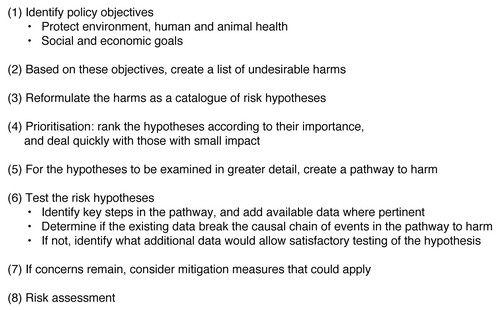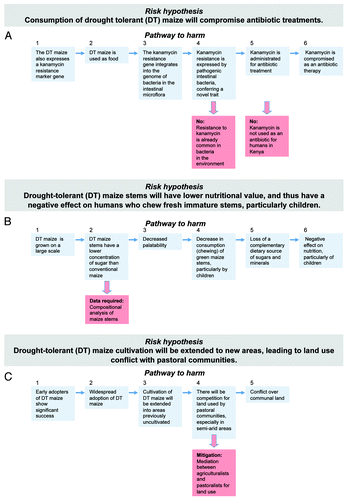Figures & data
Figure 1. Steps in the risk analysis strategy used at ICGEB training courses in risk analysis for the unconfined release of GMOs.

Table 1. Prioritization of a selection of the risk hypotheses developed for the cultivation of drought-tolerant (DT) white maize in Kenya (Nairobi 2010 and Trieste 2012 workshops)
Figure 2. An example of how a risk hypothesis can be made explicit by developing a pathway to harm. The three examples presented are taken from a hypothetical case study of drought-tolerant maize for release in Kenya. (A) The participants concluded this to not be a significant problem, since resistance to kanamycin is already common in bacteria in the environment (breaking step 6) and kanamycin is not used as an antibiotic for humans in Kenya (breaking step 7). (B) Green maize stems are a complementary source of nutrients for small children in Kenya and elsewhere in Africa. The workshop participants considered that compositional analysis of maize stems at the stage of development where they are consumed was essential. (C) The workshop participants considered that the best solution to this potential problem would be to set up a system for mediation between agriculturalists and pastoralists regarding land use, in order to avoid conflicts over land use.
